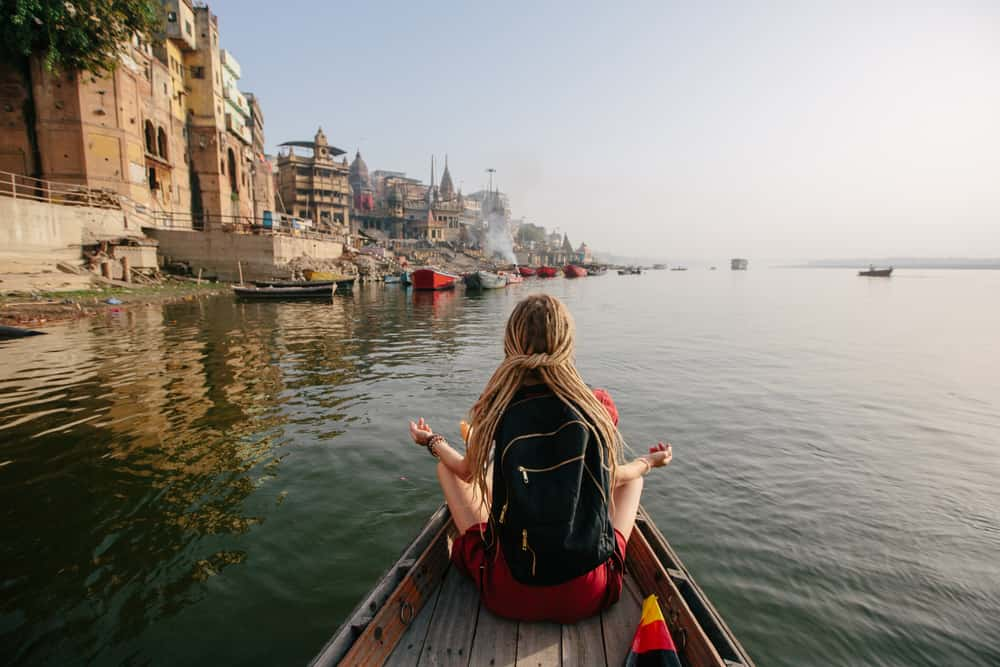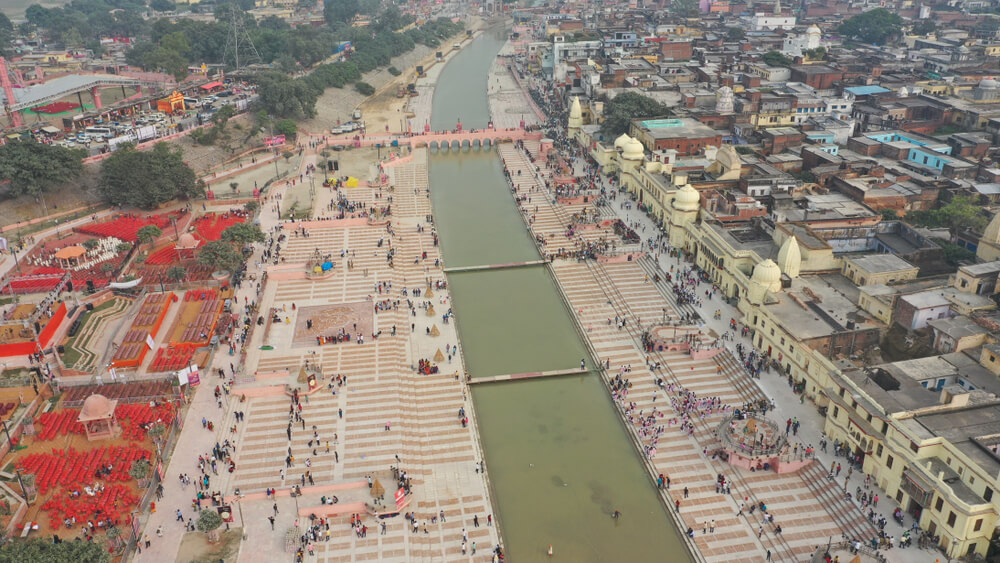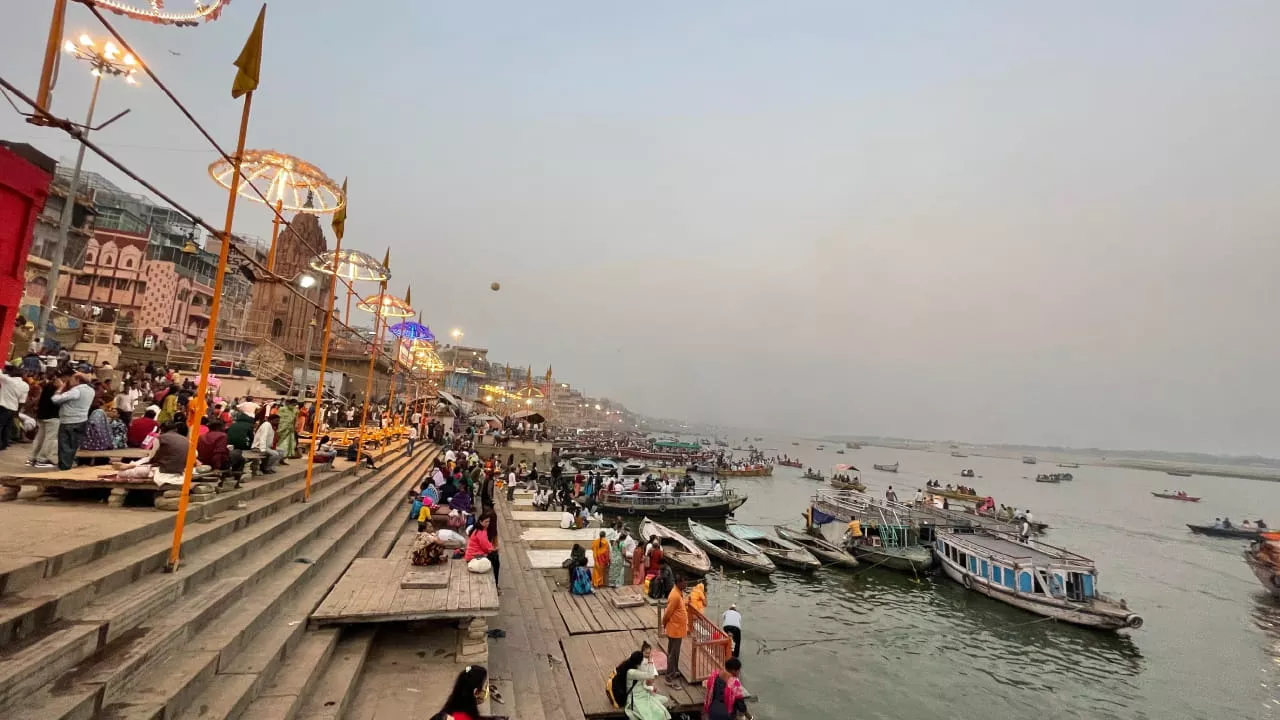Just a short journey from the vibrant, chaotic, and sacred city of Varanasi lies a pocket of profound tranquility and immense historical significance: Sarnath. If Bodh Gaya was the site of the Buddha’s personal enlightenment, Sarnath is where his enlightenment was gifted to the world. This is the hallowed ground where, over 2,500 years ago, the newly awakened Siddhartha Gautama delivered his very first sermon, setting in motion the “Wheel of Dharma.” It was here that the core tenets of Buddhism—the Four Noble Truths and the Eightfold Path—were first articulated, not as dogma, but as a compassionate, practical guide to end suffering. To visit Sarnath is to stand at the epicenter of a spiritual earthquake that has shaped the lives of billions, a place where the silence speaks volumes and the air is thick with the whispers of history.
In the Buddha’s time, this place was known as Mrigadava, the “Deer Park,” a serene forest where ascetics could meditate undisturbed. After attaining enlightenment, the Buddha journeyed here to find his five former companions who had previously abandoned him. In the shade of the trees, he shared his profound discovery with them. This single event marked the birth of the Sangha (the monastic community) and the formal beginning of Buddhism as a world religion. For the next 1,500 years, Sarnath flourished as a premier center of Buddhist learning, art, and pilgrimage, reaching its zenith under the patronage of the great Mauryan Emperor Ashoka, who erected magnificent stupas and the iconic pillar that would one day lend its capital to a newly independent India.
The Sarnath school of art, which blossomed here, produced some of the most sublime and serene images of the Buddha ever created, masterpieces that perfectly captured his enlightened nature. However, following invasions in the 12th century, Sarnath was sacked and fell into ruin, its glorious history buried under layers of earth and forgotten for centuries. It was only rediscovered by British archaeologists in the 19th century, who unearthed the treasures we see today. Walking through its manicured lawns, surrounded by the monumental ruins of stupas and monasteries, is a deeply moving experience. It is a journey to the very roots of a philosophy of peace, a chance to connect with the moment a single, compassionate voice shared a timeless truth with the world.
Dhamek Stupa: The most imposing and recognizable structure in Sarnath, this massive cylindrical stupa of brick and stone dominates the landscape. Believed to mark the exact spot where the Buddha delivered his first sermon, its sheer scale is awe-inspiring. The lower sections are adorned with delicate Gupta-era carvings of geometric patterns, floral designs, and human figures, showcasing the exquisite artistry of the period.
Sarnath Archaeological Museum: An absolute must-visit, this museum houses the priceless treasures unearthed from the site. Its most famous exhibit is the magnificent Lion Capital of Ashoka, a polished sandstone sculpture of four lions back-to-back that originally crowned the Ashoka Pillar. This very sculpture was adopted as the National Emblem of India. Also housed here is the world-renowned statue of the seated Buddha in the Dharmachakra Pravartana mudra—a serene masterpiece of Gupta art depicting him during the first sermon.
Chaukhandi Stupa: This terraced brick stupa marks the spot where the Buddha first met his five companions upon his return to Sarnath. While the base is ancient, the octagonal tower on top is a curious later addition, built in the 16th century by a Mughal governor to commemorate a visit by Emperor Humayun, creating a unique fusion of architectural histories.
Ruins of the Ashoka Pillar: While the magnificent capital is in the museum, the broken base of the original pillar still stands in its original location. The inscriptions carved into it by Emperor Ashoka are a tangible connection to one of ancient India’s greatest rulers and his devotion to the spread of Dharma.
Mulagandha Kuti Vihar: There are two sites with this name. The ruins of the original Vihar are where the Buddha is said to have spent his first rainy season. The new Mulagandha Kuti Vihar, built in the 1930s by the Maha Bodhi Society, is a beautiful modern temple. Its main feature is the stunning collection of frescoes by Japanese artist Kosetsu Nosu, which vividly narrate the life of the Buddha.
Modern International Temples: Reflecting Sarnath’s global significance, the area around the main ruins is home to beautiful modern temples built by various Buddhist countries, including Thailand, Tibet, Japan, and Sri Lanka. Each showcases its unique architectural style and offers a glimpse into the living, international tradition of Buddhism.

Important: Highlights and sightseeing may be adjusted based on your departure date, local customs, availability influenced by local traditions, and our capacity to provide.



Important: Highlights and sightseeing may be adjusted based on your departure date, local customs, availability influenced by local traditions, and our capacity to provide.

Important: Highlights and sightseeing may be adjusted based on your departure date, local customs, availability influenced by local traditions, and our capacity to provide.

Important: Highlights and sightseeing may be adjusted based on your departure date, local customs, availability influenced by local traditions, and our capacity to provide.

Important: Highlights and sightseeing may be adjusted based on your departure date, local customs, availability influenced by local traditions, and our capacity to provide.

Important: Highlights and sightseeing may be adjusted based on your departure date, local customs, availability influenced by local traditions, and our capacity to provide.

Important: Highlights and sightseeing may be adjusted based on your departure date, local customs, availability influenced by local traditions, and our capacity to provide.

Important: Highlights and sightseeing may be adjusted based on your departure date, local customs, availability influenced by local traditions, and our capacity to provide.

Important: Highlights and sightseeing may be adjusted based on your departure date, local customs, availability influenced by local traditions, and our capacity to provide.

Important: Highlights and sightseeing may be adjusted based on your departure date, local customs, availability influenced by local traditions, and our capacity to provide.

Important: Highlights and sightseeing may be adjusted based on your departure date, local customs, availability influenced by local traditions, and our capacity to provide.

Important: Highlights and sightseeing may be adjusted based on your departure date, local customs, availability influenced by local traditions, and our capacity to provide.

Important: Highlights and sightseeing may be adjusted based on your departure date, local customs, availability influenced by local traditions, and our capacity to provide.

Important: Highlights and sightseeing may be adjusted based on your departure date, local customs, availability influenced by local traditions, and our capacity to provide.

Important: Highlights and sightseeing may be adjusted based on your departure date, local customs, availability influenced by local traditions, and our capacity to provide.

Important: Highlights and sightseeing may be adjusted based on your departure date, local customs, availability influenced by local traditions, and our capacity to provide.
Get help from our experts:
+91 775 409 7777
+91 911 523 4555
Office Hours:
Monday-Saturday
10AM TO 9PM
Sunday
12PM TO 6PM